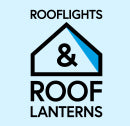How to Minimise Heat Loss with Rooflights in Winter
Rooflights are a fantastic addition to any property, offering an abundance of natural light and creating a sense of openness. However, as temperatures drop during the winter months, concerns about heat loss can arise. The good news is that modern rooflights are designed to be energy-efficient, and there are several ways to ensure they perform optimally, keeping your home warm and cosy.
1. Invest in High-Performance Glazing
One of the most effective ways to minimise heat loss through rooflights is by choosing products with high-performance glazing. Double or triple glazing creates an insulating barrier, reducing the transfer of heat between the interior and exterior of your property. These types of glass are often paired with inert gas fillings, such as argon, which further improves thermal insulation.
At Rooflights & Roof Lanterns, products like the Korniche flat rooflight feature advanced glazing technology designed to prevent unnecessary heat loss while allowing maximum light into your space.
2. Use Thermal Breaks
Thermal breaks in the frame of a rooflight are crucial for reducing heat transfer. These are insulating materials integrated into the structure of the frame to block the natural conductivity of metal, ensuring that warmth stays indoors. Rooflights with well-engineered thermal breaks not only improve energy efficiency but also eliminate the risk of condensation forming on the frames.
3. Add Thermal Blinds or Insulating Shades
For an extra layer of insulation, consider installing thermal blinds or insulating shades over your rooflights. These can be particularly useful during the night when the absence of sunlight makes rooms cooler. Thermal blinds are designed to trap heat within the room while still allowing flexibility to adjust light levels during the day.
4. Opt for Correct Installation
Proper installation plays a vital role in the energy performance of rooflights. Poorly fitted rooflights can result in gaps or weak points where heat can escape. Working with experienced professionals ensures a secure installation with airtight seals, maximising the energy-saving benefits of your investment. Rooflights & Roof Lanterns offers guidance and resources to help ensure installations are efficient and trouble-free.
5. Choose Low-E Glass
Low-emissivity (Low-E) glass has a microscopically thin coating that reflects heat back into the room while still allowing sunlight to pass through. This type of glass is ideal for rooflights, as it enhances thermal insulation without compromising on natural light.
6. Regular Maintenance
Over time, wear and tear can impact the energy efficiency of rooflights. Regularly checking for any signs of damage, such as cracks or gaps in the seals, and addressing them promptly can help maintain optimal thermal performance. Rooflights & Roof Lanterns offers durable products designed for long-term use, reducing the need for frequent repairs or replacements.
Conclusion
Minimising heat loss through rooflights in winter is a straightforward process when using the right products and taking a few precautionary measures. High-performance glazing, thermal breaks, and proper installation are all key to ensuring your home remains warm and energy-efficient. With a comprehensive range of advanced and reliable rooflight options, Rooflights & Roof Lanterns provides solutions that are not only stylish but also designed to perform in all seasons.
Explore their range today and discover how to enjoy the beauty and functionality of rooflights without compromising on warmth and comfort.
- Moshin






